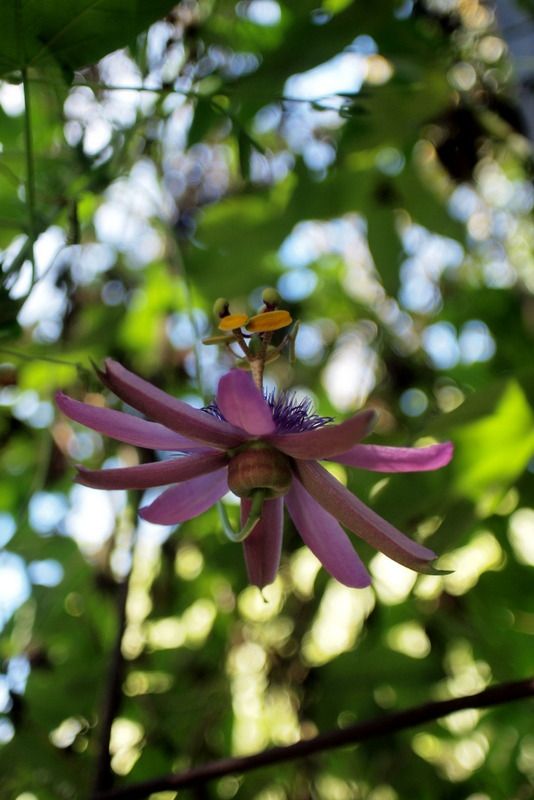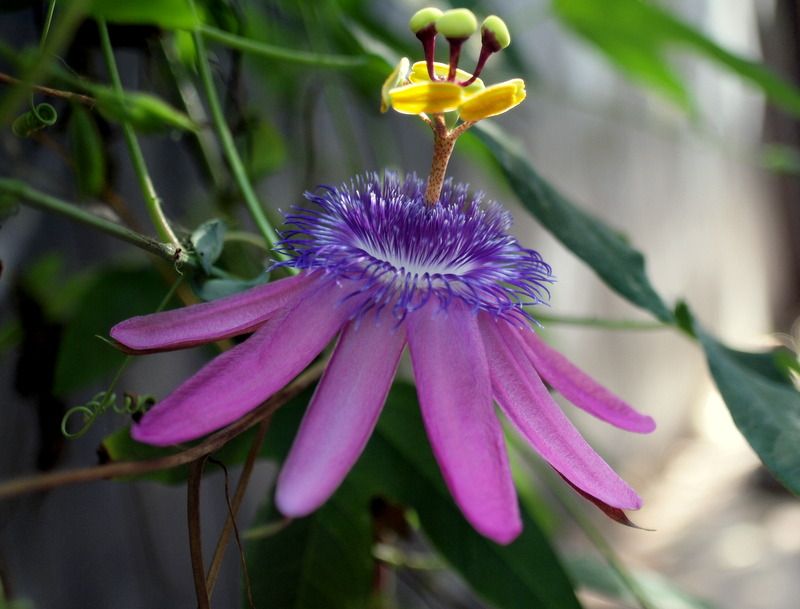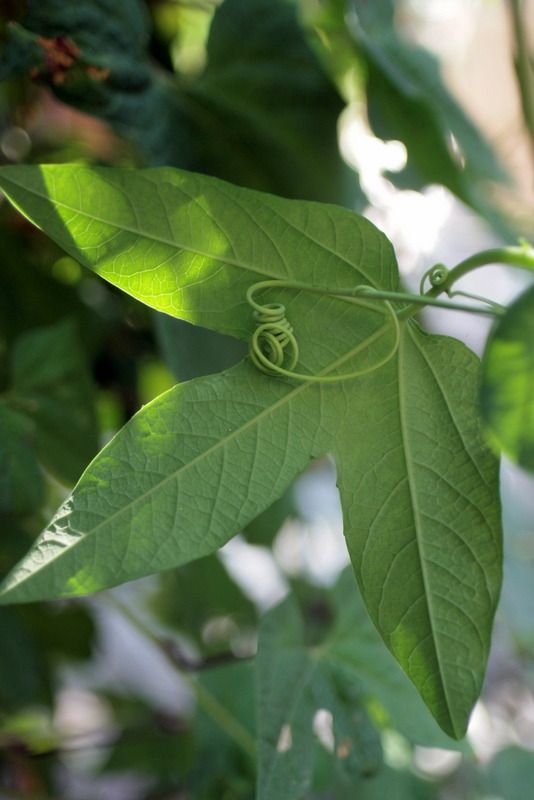Passiflora loefgrenii, also known as the garlic passionfruit vine from Brazil, is making an unlikely, late-December flowering debut in my garden. This December show is probably a one-time fluke for a summer bloomer that will settle down to a more predictable routine after its first year. Then again, it may actually prefer to bloom in a zone 10, cool, drizzly winter than during our long, hot, drought-scourged summers. It’s a rare passion flower, without much horticultural information available.

An architectural marvel, the structure of a passion flower was long ago co-opted as a kind of 3-D precursor to a theological Power Point presentation on Christianity: From Wikipedia: “In the 15th and 16th centuries, Spanish Christian missionaries adopted the unique physical structures of this plant, particularly the numbers of its various flower parts, as symbols of the last days of Jesus and especially his crucifixion,” a rather funereal association for a vine that attracts and sustains so much life.

I share photographer Andrew Zuckerman’s assessment: “Then there is the purple passionflower, which is an incredibly beautiful, vibrant, flamboyant flower, but its narrative qualities are not that interesting to me.” (quoted from the Smithsonian’s blog Collage of Arts and Sciences, “Flower Power, Redefined.”)
Passiflora’s relationship with various butterflies is well known, but its attractions are manifold; the garlic passionfruit’s “Remarkable flowers…are thought to appeal to hummingbirds when first open then to bees later in the day as their shape changes.” (From Passiflora Online)
My plant is from Annie’s Annuals & Perennials. Logee’s has a good selection, as does Kartuz Greenhouses. In Southern California, some passion flowers are fast, rampant growers, so keep ultimate size in mind when making a selection. (Bear in mind that they are a frequent choice to quickly cover chain link fences.) Pollination is thought to be a job for large bees, which works out nicely since our wooden fence is loaded with carpenter bees.


So beautiful…I love those fabulous tendrils almost as much as the blooms…almost!
When I see them, I photograph. They are so photogenic. Your first shot looks as if the bloom in hovering unattached.
Scott, I know! The tendrils come in so many interesting permutations.
Les, they are one of the great photogenic flowers. Maybe I’ll try Zuckerman style and get a white backdrop.